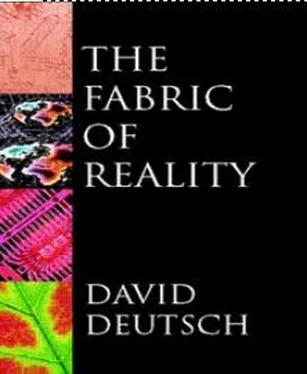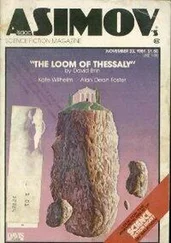David Deutch - The Fabric of Reality
Здесь есть возможность читать онлайн «David Deutch - The Fabric of Reality» весь текст электронной книги совершенно бесплатно (целиком полную версию без сокращений). В некоторых случаях можно слушать аудио, скачать через торрент в формате fb2 и присутствует краткое содержание. ISBN: , Жанр: Физика, Философия, на английском языке. Описание произведения, (предисловие) а так же отзывы посетителей доступны на портале библиотеки ЛибКат.
- Название:The Fabric of Reality
- Автор:
- Жанр:
- Год:неизвестен
- ISBN:0-7139-9061-9
- Рейтинг книги:4 / 5. Голосов: 2
-
Избранное:Добавить в избранное
- Отзывы:
-
Ваша оценка:
- 80
- 1
- 2
- 3
- 4
- 5
The Fabric of Reality: краткое содержание, описание и аннотация
Предлагаем к чтению аннотацию, описание, краткое содержание или предисловие (зависит от того, что написал сам автор книги «The Fabric of Reality»). Если вы не нашли необходимую информацию о книге — напишите в комментариях, мы постараемся отыскать её.
The Fabric of Reality — читать онлайн бесплатно полную книгу (весь текст) целиком
Ниже представлен текст книги, разбитый по страницам. Система сохранения места последней прочитанной страницы, позволяет с удобством читать онлайн бесплатно книгу «The Fabric of Reality», без необходимости каждый раз заново искать на чём Вы остановились. Поставьте закладку, и сможете в любой момент перейти на страницу, на которой закончили чтение.
Интервал:
Закладка:
The conventional argument for the insignificance of life gives too much weight to bulk quantities like size, mass and energy. In the parochial past and present these were and are good measures of astrophysical significance, but there is no reason within physics why that should continue to be so. Moreover, the biosphere itself already provides abundant counter-examples to the general applicability of such measures of significance. In the third century BC, for instance, the mass of the human race was about ten million tonnes. One might therefore conclude that it is unlikely that physical processes occurring in the third century BC and involving the motion of many times that mass could have been significantly affected by the presence or absence of human beings. But the Great Wall of China, whose mass is about three hundred million tonnes, was built at that time. Moving millions of tonnes of rock is the sort of thing that human beings do all the time. Nowadays it takes only a few dozen humans to excavate a million-tonne railway cutting or tunnel. (The point is made even more strongly if we make a fairer comparison, between the mass of rock shifted and the mass of that tiny part of the engineer’s, or emperor’s, brain that embodies the ideas, or memes, that cause the rock to be shifted.) The human race as a whole (or, if you like, its stock of memes) probably already has enough knowledge to destroy whole planets, if its survival depended on doing so. Even non-intelligent life has grossly transformed many times its own mass of the surface and atmosphere of the Earth. All the oxygen in our atmosphere, for instance about a thousand trillion tonnes — was created by plants and was therefore a side-effect of the replication of genes, i.e. molecules, which were descendants of a single molecule. Life achieves its effects not by being larger, more massive or more energetic than other physical processes, but by being more knowledgeable. In terms of its gross effect on the outcomes of physical processes, knowledge is at least as significant as any other physical quantity.
But is there, as the ancients assumed there must be in the case of life, a basic physical difference between knowledge-bearing and non-knowledge-bearing objects, a difference that depends neither on the objects’ environments nor on their effects on the remote future, but only on the objects’ immediate physical attributes? Remarkably, there is. To see what it is, we must take the multiverse view.
Consider the DNA of a living organism, such as a bear, and suppose that somewhere in one of its genes we find the sequence TCGTCGTTTC. That particular string of ten molecules, in the special niche consisting of the rest of the gene and its niche, is a replicator. It embodies a small but significant amount of knowledge. Now suppose, for the sake of argument, that we can find a junk-DNA (non-gene) segment in the bear’s DNA which also has the sequence TCGTCGTTTC. Nevertheless this sequence is not; worth calling a replicator, because it contributes almost nothing to its replication, and it embodies no knowledge. It is a random sequence. So here we have two physical objects, both segments of the same DNA chain, one of which embodies knowledge and the other is a random sequence. But they are physically identical. How can knowledge be a fundamental physical quantity, if one object has it while a physically identical object does not?
It can, because these two segments are not really identical. They only look identical when viewed from some universes, such as ours. Let us look at them again, as they appear in other universes. We cannot directly observe other universes, so we must use theory.
We know that DNA in living organisms is naturally subject to random variations — mutations — in the sequence of A, C, G and T molecules. According to the theory of evolution, the adaptations in genes, and therefore the genes’ very existence, depend on such mutations having occurred. Because of mutations, populations of any gene contain a degree of variation, and individuals carrying genes with higher degrees of adaptation tend to have more offspring than other individuals. Most variations in a gene make it unable to cause its replication, because the altered sequence no longer instructs the cell to manufacture anything useful. Others merely make replication less likely (that is, they narrow the gene’s niche). But some may happen to embody new instructions that make replication more likely. Thus natural selection occurs. With each generation of variation and replication the degree of adaptation of the surviving genes tends to increase. Now, a random mutation, caused for instance by a cosmic-ray strike, causes variation not only within the population of the organism in one universe, but between universes as well. A cosmic ‘ray’ is a high-energy sub-atomic particle and, like a photon emitted from a torch, it travels in different directions in different universes. So when a cosmic-ray particle strikes a DNA strand and causes a mutation, some of its counterparts in other universes are missing their copies of the DNA strand altogether, while others are striking it at different positions, and hence causing different mutations. Thus a single cosmic-ray strike on a single DNA molecule will in general cause a large range of different mutations to appear in different universes.
When we are considering what a particular object may look like in other universes, we must not look so far afield in the multiverse that it is impossible to identify a counterpart, in the other universe, of that object. Take a DNA segment, for instance. In some universes there are no DNA molecules at all. Some universes containing DNA are so dissimilar to ours that there is no way of identifying which DNA segment in the other universe corresponds to the one we are considering in this universe. It is meaningless to ask what our particular DNA segment looks like in such a universe, so we must consider only universes that are sufficiently similar to ours for this ambiguity not to arise. For instance, we could consider only those universes in which bears exist, and in which a sample of DNA from a bear has been placed in an analysing machine, which has been programmed to print out ten letters representing the structure at a specified position relative to certain landmarks on a specified DNA strand. The following discussion would be unaffected if we were to choose any other reasonable criterion for identifying corresponding segments of DNA in nearby universes.
By any such criterion, the bear’s gene segment must have the same sequence in almost all nearby universes as it does in ours. That is because it is presumably highly adapted, which means that most variants of it would not succeed in getting themselves copied in most variants of their environment, and so could not appear at that location in the DNA of a living bear. In contrast, when the non-knowledge-bearing DNA segment undergoes almost any mutation, the mutated version is still capable of being copied. Over generations of replication many mutations will have occurred, and most of them will have had no effect on replication. Therefore the junk-DNA segment, unlike its counterpart in the gene, will be thoroughly heterogeneous in different universes. It may well be that every possible variation of its sequence is equally represented in the multiverse (that is what we should mean by its sequence being strictly random).
So the multiverse perspective reveals additional physical structure in the bear’s DNA. In this universe, it contains two segments with the sequence TCGTCGTTTC. One of them is part of a gene while the other is not part of any gene. In most other nearby universes, the first of the two segments has the same sequence, TCGTCGTTTC, as it does in our universe, but the second segment varies greatly between nearby universes. So from the multiverse perspective the two segments are not even remotely alike (Figure 8.1).
Читать дальшеИнтервал:
Закладка:
Похожие книги на «The Fabric of Reality»
Представляем Вашему вниманию похожие книги на «The Fabric of Reality» списком для выбора. Мы отобрали схожую по названию и смыслу литературу в надежде предоставить читателям больше вариантов отыскать новые, интересные, ещё непрочитанные произведения.
Обсуждение, отзывы о книге «The Fabric of Reality» и просто собственные мнения читателей. Оставьте ваши комментарии, напишите, что Вы думаете о произведении, его смысле или главных героях. Укажите что конкретно понравилось, а что нет, и почему Вы так считаете.












